The 7 Species Of Crocodilians On The Brink Of Extinction
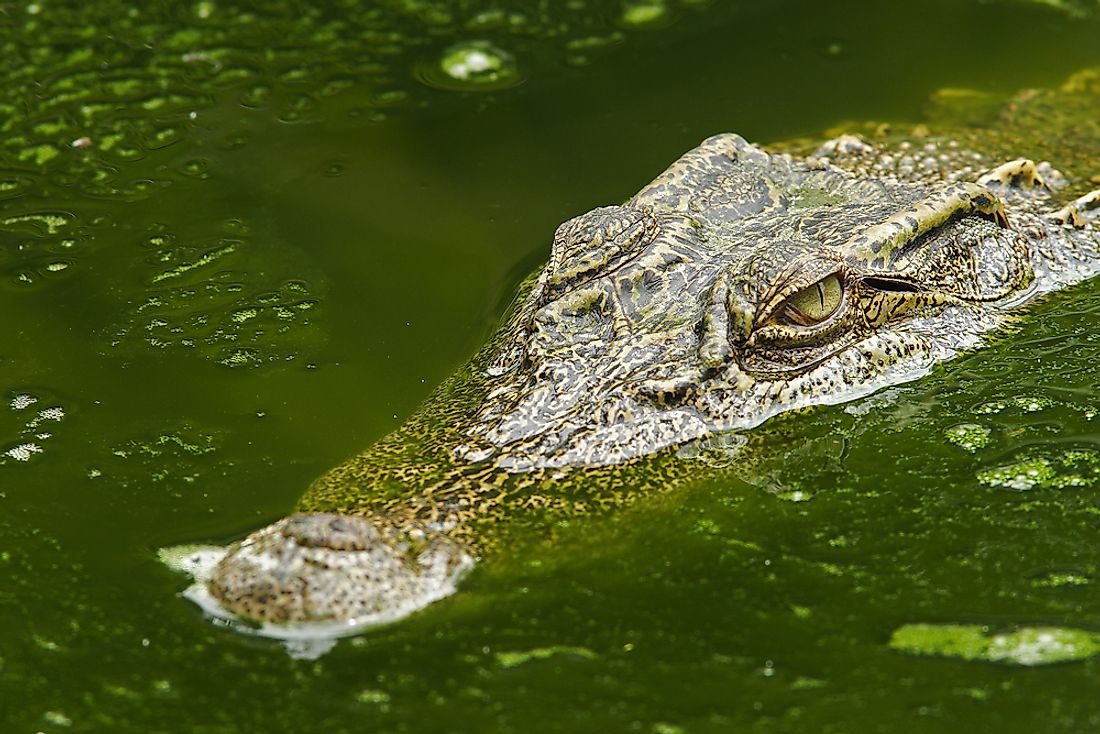
7. Chinese Alligator
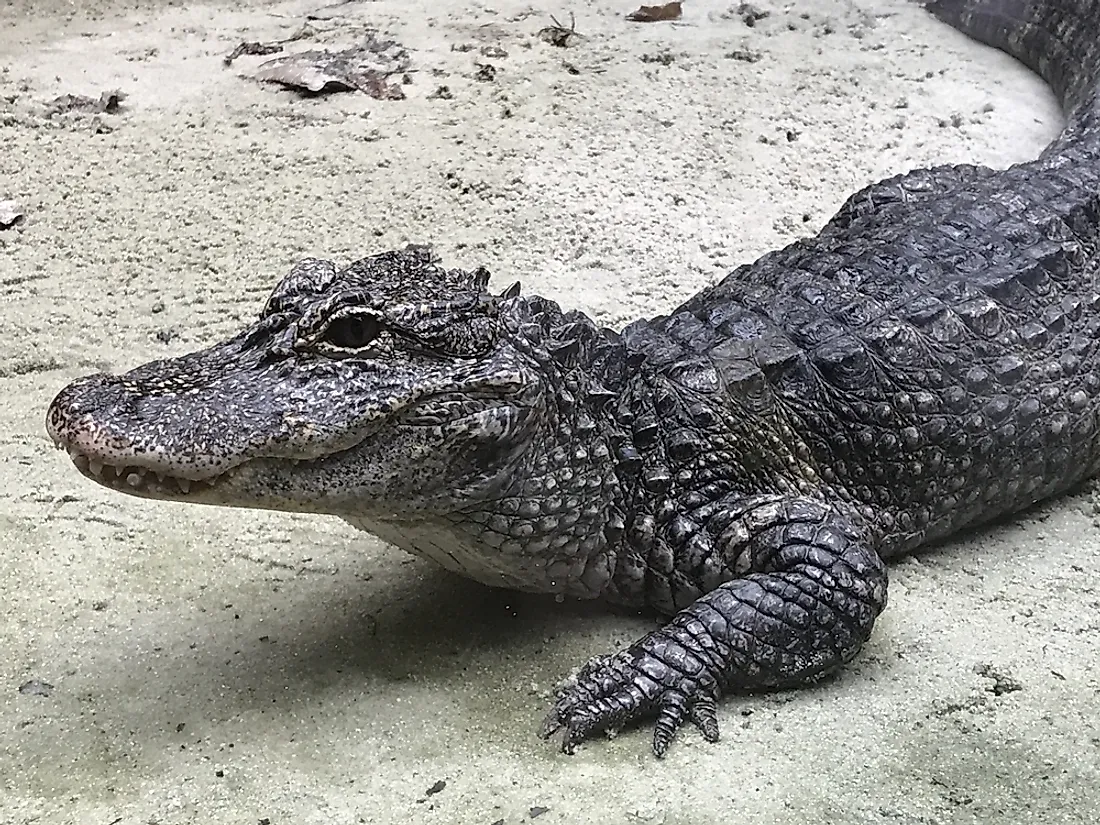
Endemic to eastern China, the Alligator sinensis is found in the freshwater habitats like lakes, marshes, streams, etc., in its range. Although the species was wide-ranging in the past, by 1998, the range of the species was reduced by 90% with the biggest area occupied by the species being a small pond surrounded by farmlands near the Yangtze River. Several factors are held responsible for the ill fortune of this species. Large parts of the wetland habitat of the species have been converted to farmlands or human settlements. These alligators have also died due to indirect poisoning by consuming poisoned rodents. Humans have also directly hunted these animals for decades either out of fear or for their meat. In 1999, one report estimated the wild population of the species to be only around 150 individuals.
6. Orinoco Crocodile
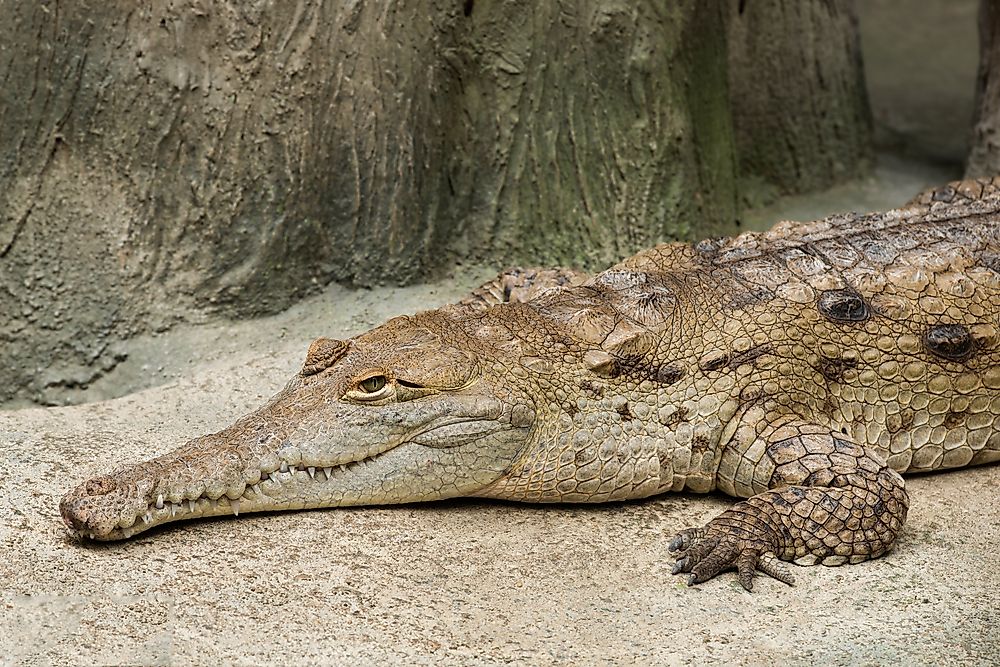
Another critically endangered species, the Crocodylus intermedius, is mainly found in the Orinoco river and its tributaries, and some other freshwater bodies in Venezuela and Colombia. Little is known about the biology of this large predator due to its small population. The species has been indiscriminately hunted for its hide in the past few decades. The species was nearly on the brink of extinction due to mass slaughtering between the 1940’s and 60’s. Although it is now protected against hunting in both the countries of its existence, threats to the species continues to prevail. Today, juvenile Orinoco crocodiles are captured illegally for the live animal trade. Pollution of the water bodies inhabited by these crocodiles also threatens the health of the populations. There is also a proposal to build a dam on the Orinoco River which might spell disaster on the species. Besides, the presence of the smaller spectacled caimans provides a tough competition to the Orinoco crocodiles for food.
5. Philippine Crocodile
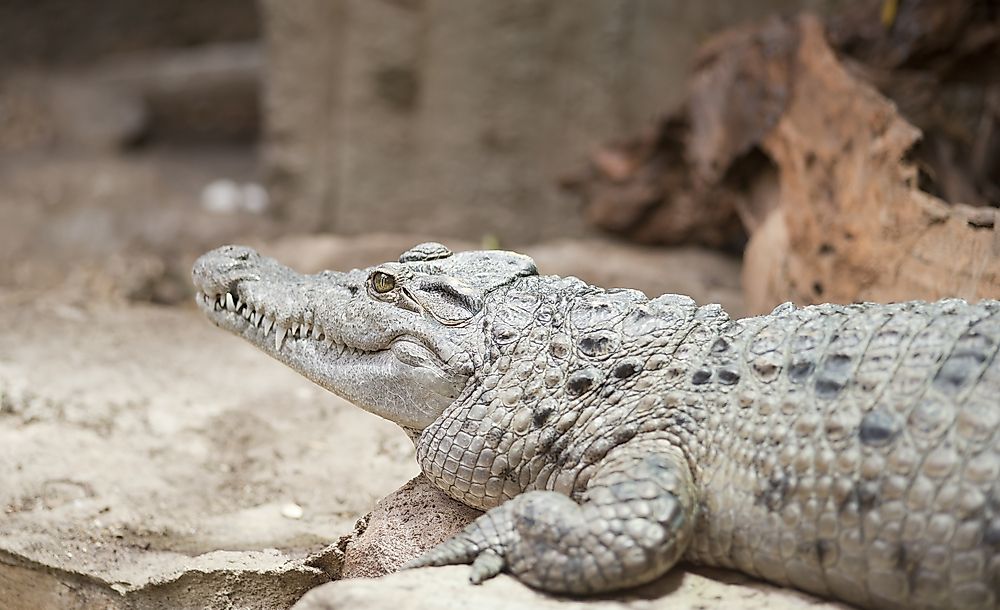
Also known as the Mindoro crocodile, the Crocodylus mindorensis is endemic to the Philippines and is one of the only species of crocodiles found in the country. The species has been extirpated from large parts of its historical range. They play an important ecological role in the ecosystem they inhabit by preying primarily on the most common fish in the ecosystem. They also consume unhealthy fish and thus help in improving the health of the fish stock. The droppings of the crocodiles are a source of nutrients to the fish sharing the water body with the crocodiles. It is estimated that only about 250 individuals of the Philippine Crocodile are left in the world today. Also, due to low numbers, little data about the biology and behavior of the species exists. Sadly, little awareness about the importance of these crocodiles exists among the mainstream Filipino society where these animals are regarded with fear and hatred. However, indigenous human populations sharing the habitat of these crocodiles are known to regard these reptiles with respect. Due to a lack of awareness about the species, despite protection being granted to the species, hunting by humans continues to further push the species to the brink of extinction.
4. Cuban Crocodile
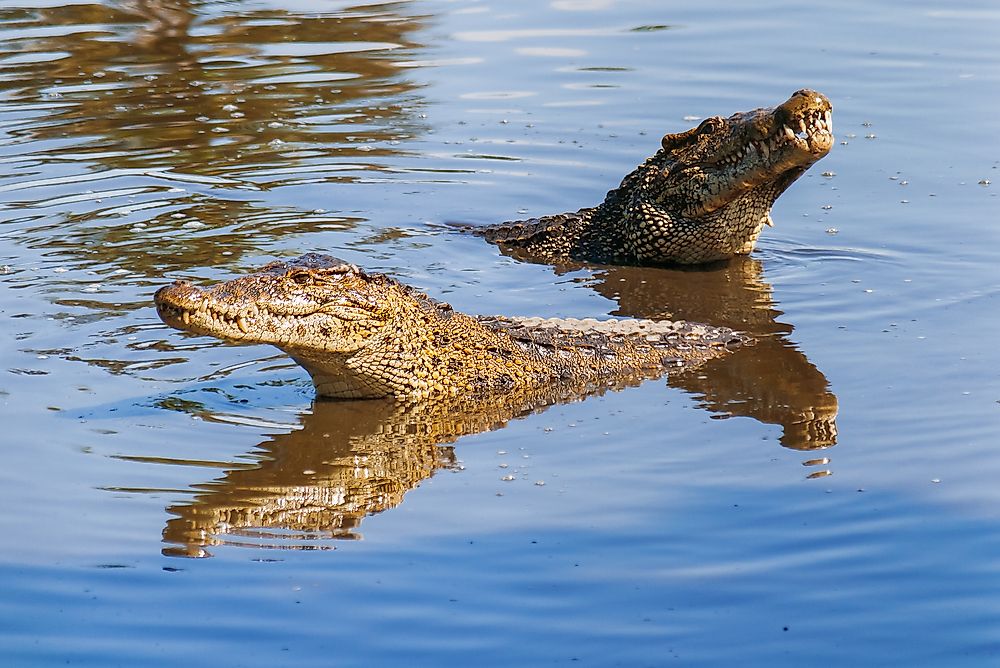
The Crocodylus rhombifer is also one of the most threatened species of crocodiles living in the world today. The species is endemic to Cuba and is regarded as a highly aggressive species that can pose a great threat to humans. It is also the most terrestrial of all crocodile species and also possibly, the most intelligent. The species is suspected to exhibit pack-hunting behavior but the fact is yet to be confirmed. The species has a highly restricted habitat and range and have been hunted by humans for ages. Today, its range is highly restricted to the Isle of Youth and the Zapata Swamp in Cuba.
3. Siamese Crocodile
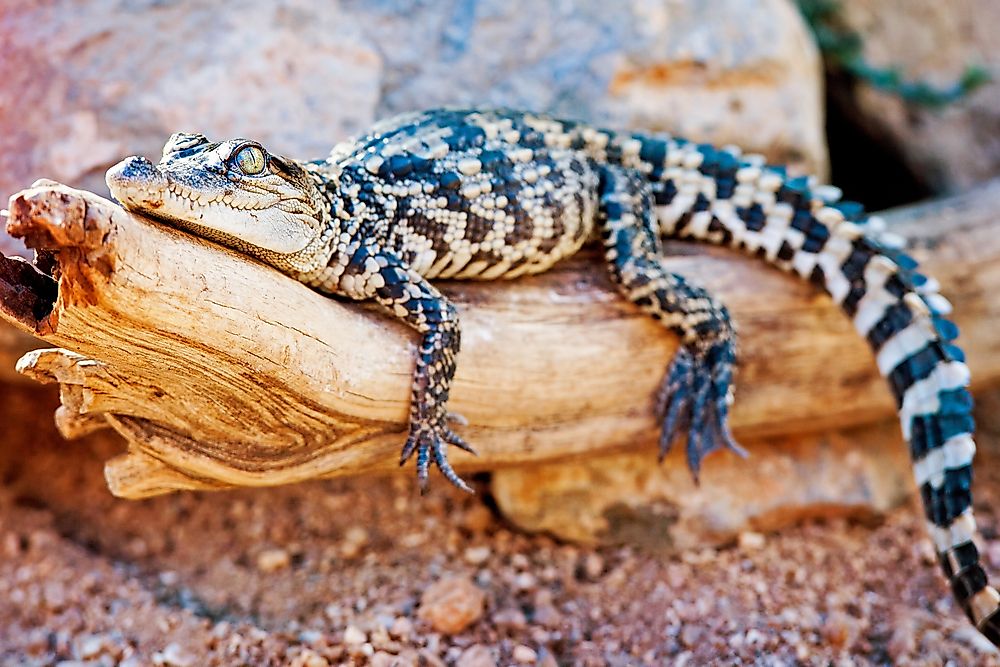
The Crocodylus siamensis was once widespread through much of Southeast Asia but is now either already extinct in the wild in most parts of its range or nearly extinct in other parts. The only significant populations of this species occur in Cambodia. The species is, however, extensively bred in captivity. The Siamese crocodile has lost 99% of its former range. Habitat destruction and disturbance by humans are responsible for the poor conservation status of the species. There are about 200 to 400 individuals of the species surviving with 30 sub-populations in Cambodia, and tiny populations in Vietnam, Thailand, and Laos. The conversion of wetlands to farmlands, use of polluting chemicals like pesticides, the effects of warfare, construction of dams and other developmental projects, etc., all contribute to the steady demise of the Siamese crocodile.
2. Slender-snouted Crocodile
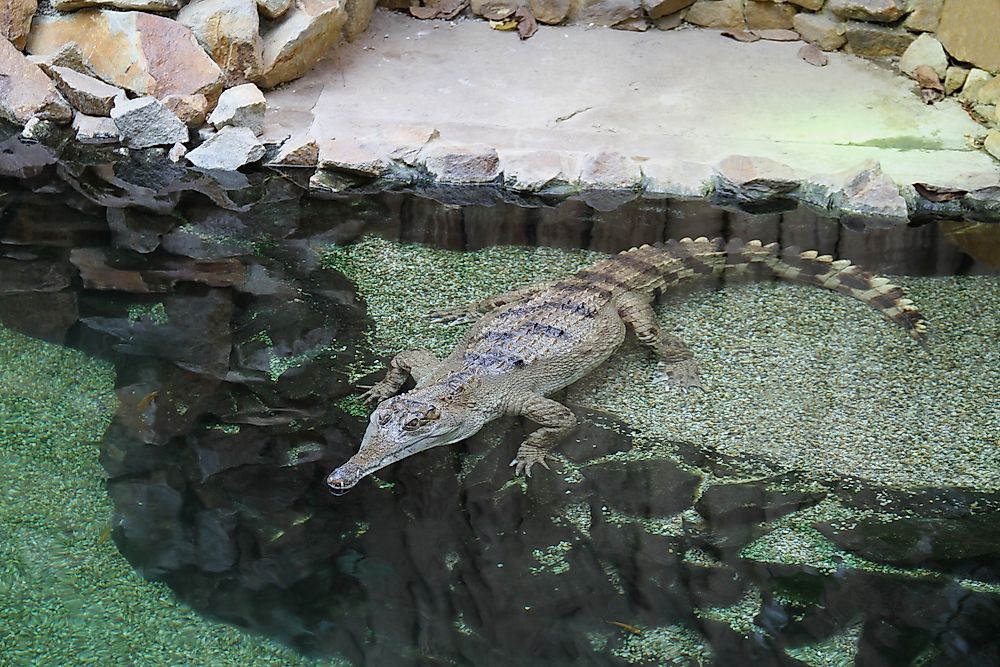
The Mecistops cataphractus is found in central and western Africa where it inhabits freshwater habitats. Although few studies related to this species have been conducted, a 2014 review of the current conservation status of the species revealed shocking results. It is estimated the species is now extinct in major parts of its historical range and in those places where it survives, the population is steadily declining. Gabon has one of the most stable populations of the slender-snouted crocodile. The threats to this species include hunting for skin and bushmeat, habitat loss, loss of prey due to overfishing by humans, and general disturbance caused by human activities in the habitat of this shy species. The number of surviving individuals of this species could be anywhere between 1,000 to 20,000.
1. Gharial
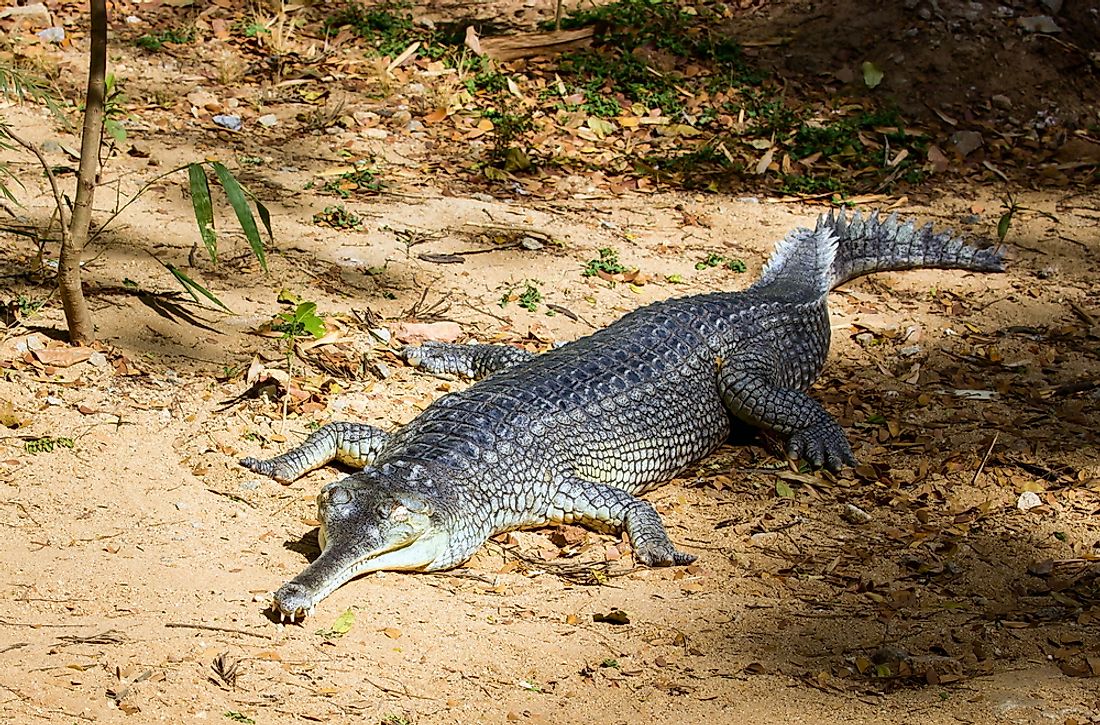
The fish-eating crocodile or the Gavialis gangeticus is also a critically endangered crocodilian. It is found in the northern parts of the Indian sub-continent. Fewer than 235 individuals of this species remain in the wild today. The species face threats of habitat destruction, habitat degradation, pollution, depletion of fish resources, and death as bycatch.











